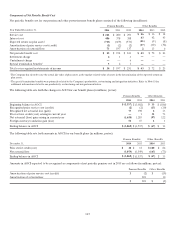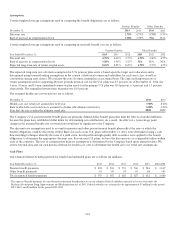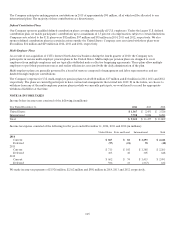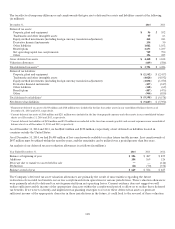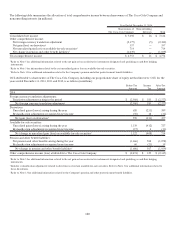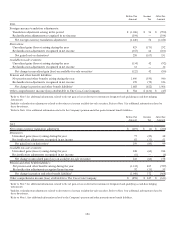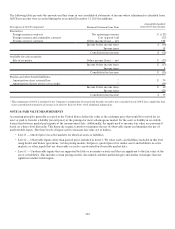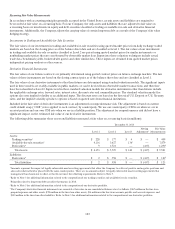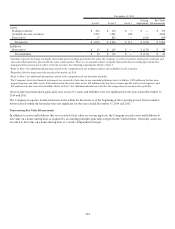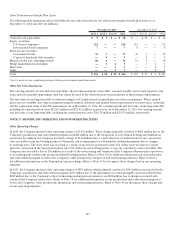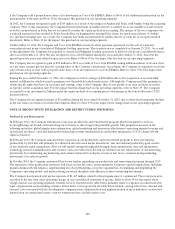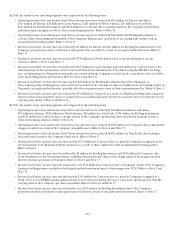Coca Cola 2014 Annual Report Download - page 125
Download and view the complete annual report
Please find page 125 of the 2014 Coca Cola annual report below. You can navigate through the pages in the report by either clicking on the pages listed below, or by using the keyword search tool below to find specific information within the annual report.
123
Recurring Fair Value Measurements
In accordance with accounting principles generally accepted in the United States, certain assets and liabilities are required to
be recorded at fair value on a recurring basis. For our Company, the only assets and liabilities that are adjusted to fair value on
a recurring basis are investments in equity and debt securities classified as trading or available-for-sale and derivative financial
instruments. Additionally, the Company adjusts the carrying value of certain long-term debt as a result of the Company’s fair value
hedging strategy.
Investments in Trading and Available-for-Sale Securities
The fair values of our investments in trading and available-for-sale securities using quoted market prices from daily exchange traded
markets are based on the closing price as of the balance sheet date and are classified as Level 1. The fair values of our investments
in trading and available-for-sale securities classified as Level 2 are priced using quoted market prices for similar instruments or
nonbinding market prices that are corroborated by observable market data. Inputs into these valuation techniques include actual
trade data, benchmark yields, broker/dealer quotes and other similar data. These inputs are obtained from quoted market prices,
independent pricing vendors or other sources.
Derivative Financial Instruments
The fair values of our futures contracts are primarily determined using quoted contract prices on futures exchange markets. The fair
values of these instruments are based on the closing contract price as of the balance sheet date and are classified as Level 1.
The fair values of our derivative instruments other than futures are determined using standard valuation models. The significant inputs
used in these models are readily available in public markets, or can be derived from observable market transactions, and therefore
have been classified as Level 2. Inputs used in these standard valuation models for derivative instruments other than futures include
the applicable exchange rates, forward rates, interest rates, discount rates and commodity prices. The standard valuation model for
options also uses implied volatility as an additional input. The discount rates are based on the historical U.S. Deposit or U.S. Treasury
rates, and the implied volatility specific to options is based on quoted rates from financial institutions.
Included in the fair value of derivative instruments is an adjustment for nonperformance risk. The adjustment is based on current
credit default swap (“CDS”) rates applied to each contract, by counterparty. We use our counterparty’s CDS rate when we are in
an asset position and our own CDS rate when we are in a liability position. The adjustment for nonperformance risk did not have a
significant impact on the estimated fair value of our derivative instruments.
The following tables summarize those assets and liabilities measured at fair value on a recurring basis (in millions):
December 31, 2014
Level 1 Level 2 Level 3
Netting
Adjustment1
Fair Value
Measurements
Assets:
Trading securities2$ 228 $ 177 $ 4 $ — $ 409
Available-for-sale securities2 4,116 3,627 1363—
7,879
Derivatives49 1,721 — (437) 1,2935
Total assets $ 4,353 $ 5,525 $ 140 $ (437) $ 9,581
Liabilities:
Derivatives4$ 2 $ 558 $ — $ (437) $ 1235
Total liabilities $ 2 $ 558 $ — $ (437) $ 123
1
Amounts represent the impact of legally enforceable master netting agreements that allow the Company to settle net positive and negative positions and
also cash collateral held or placed with the same counterparties. There are no amounts subject to legally enforceable master netting agreements that
management has chosen not to offset or that do not meet the offsetting requirements. Refer to Note 5.
2
Refer to Note 3 for additional information related to the composition of our trading securities and available-for-sale securities.
3
Primarily related to long-term debt securities that mature in 2018.
4
Refer to Note 5 for additional information related to the composition of our derivative portfolio.
5
The Company’s derivative financial instruments are recorded at fair value in our consolidated balance sheet as follows: $567 million in the line item
prepaid expenses and other assets; $726 million in the line item other assets; $14 million in the line item accounts payable and accrued expenses; and
$109 million in the line item other liabilities. Refer to Note 5 for additional information related to the composition of our derivative portfolio.


